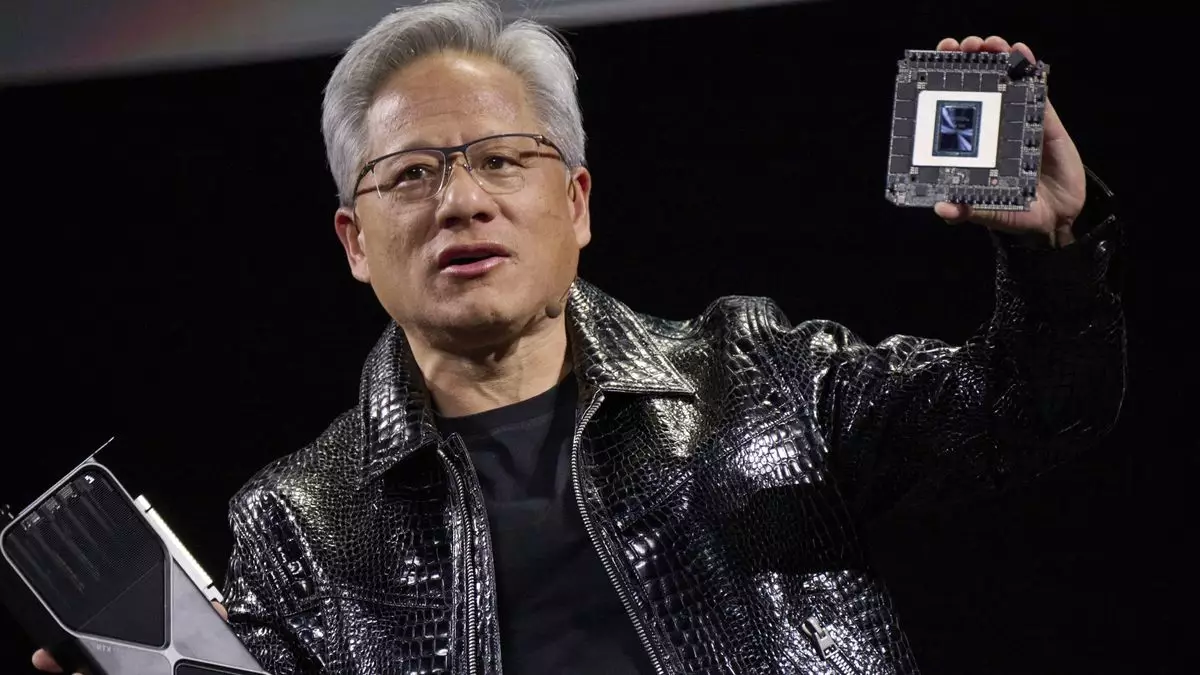Nvidia has long been a dominant player in the graphics processing unit (GPU) market, but recent reports suggest that it faces significant challenges with its new Blackwell series of AI GPUs. Major clients like Microsoft, Amazon, Google, and Meta have reportedly scaled back their orders due to concerns about overheating. Though these issues sound alarming, Nvidia’s upcoming RTX 50 gaming GPU lineup might not be as affected as one might assume.
As reported by The Information (accessible via Reuters paywall), the overheating issues plaguing the Blackwell GPUs have caused some clients to either delay their orders or revert back to the older “Hopper” generation of AI-optimized chips. Nvidia’s CEO Jensen Huang openly acknowledged the presence of “design flaws” in the Blackwell architecture back in October, heightening concerns among stakeholders. He admitted that these flaws have significantly lowered production yields, a critical metric for any manufacturing process, indicating Nvidia’s accountability but failing to directly acknowledge the overheating problem.
The distinction between design flaws and overheating is crucial when dissecting the challenges Nvidia faces. Huang’s comments centered on yield issues, which reflect the number of functional chips extracted from a wafer of silicon during production—not necessarily the performance characteristics of the chips, such as thermal management. This leaves room for speculation: are the overheating problems merely symptomatic of deeper design flaws, or are they separate issues that arose post-production?
Critically, as reported, the overheating concerns have been present since last November, with claims that liquid-cooled racks designed for 72 Blackwell GPUs underwent multiple redesigns to address these thermal challenges. This history of engineering struggles prompts questions about the thoroughness of the design validation processes employed by Nvidia. While it’s essential that they address these concerns promptly, the broader implications for gaming chips based on the same architecture remain contentious.
Despite the reported setbacks in the Blackwell architecture, there’s no immediate cause for alarm regarding the newly announced RTX 50 gaming GPUs. Although both product lines are built on Nvidia’s latest TSMC N4 silicon and utilize the Blackwell foundation, the game-oriented GPUs are engineered with different layouts and functional units tailored to specific performance optimizations in gaming. The separation of workloads—gaming versus AI tasks—introduces another layer of divergence that may mitigate the broader implications of the Blackwell issues.
Nvidia’s gaming chips operate under a distinct set of conditions and workloads, meaning the factors contributing to AI GPU overheating may not translate to the requirements of gaming GPUs. The probability that the design flaws affecting the Tensor cores of Blackwell will also impact the gaming architecture is slim. The sheer variety in workloads means performance attributes can vary widely even among products derived from the same basic architecture.
Despite the current narrative largely fueled by sources like The Information, there remains a critical lack of independent confirmation regarding the extent of these overheating issues. Relying solely on one source can skew perception and evoke undue panic across consumer and investor communities. As Nvidia is an influential entity in tech, damage to its reputation could lead to a snowball effect, garnering even more scrutiny across its product lines.
Nevertheless, Nvidia appears to have a handle on the distinct markets it serves, from gaming enthusiasts to AI researchers. The company is adept at navigating customer demands and immediate opposition, evident from its dynamic approach to product launches. It remains to be seen, however, how these challenges will affect sales, development timelines, and customer loyalty moving forward.
Navigating through these complex issues is crucial for Nvidia as it assesses its strategies and communicates with stakeholders. Effective risk management will empower them to remedy the Blackwell challenges while ensuring the success of the RTX 50 series. As consumers anticipate the release of these gaming GPUs, Nvidia must emphasize transparency and reassure customers of the product’s reliability and functionality, separating the narrative of AI challenges from gaming aspirations.
While Nvidia confronts difficulties with its Blackwell architecture, the implications for its RTX 50 series appear manageable, provided it diligently addresses the underlying issues, validates product performance, and communicates effectively with its user base. Successful resolution may not only restore confidence but could also solidify Nvidia’s standing as a market leader at the forefront of innovations in GPU technology.

